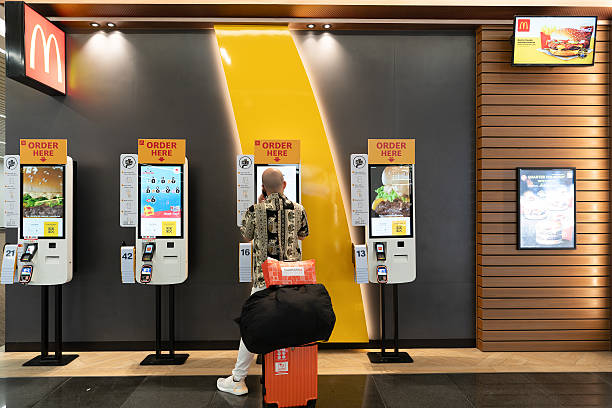Vintage -Autobesitzer sehen sich einem einzigartigen Dilemma aus: Sie wollen den zeitlosen Stil ihres klassischen Fahrzeugs behalten, Sie sehnen sich aber auch nach der Komfort der modernen Technologie - wie der Navigation, Bluetooth -Musik, und Freisprechanrufe. Ein Vintage -Auto -Touchscreen löst dieses Gleichgewicht: Sie können zeitgenössische Funktionen hinzufügen, ohne die Retro -Ästhetik Ihres Autos zu ruinieren (Denken Sie an einen eleganten 7-Zoll-Bildschirm in einem 1965 Mustang oder 1972 Volkswagen Käfer). Das Upgrade eines Vintage -Auto, einzigartige Dashboardgrößen, und strenge Stilregeln bedeuten, die Kompatibilität ist Make-or-Break. Eine falsche Wahl kann die Verkabelung Ihres Autos beschädigen, fehl am Platz aussehen, oder sogar den Wert reduzieren. Dieser Leitfaden führt Sie durch die Beurteilung der Kompatibilität, Wählen Sie den richtigen Touchscreen, und installieren Sie es, ohne den Charme Ihres Vintage -Autos zu beeinträchtigen - Sie genießen das Beste aus beiden Welten.

Schritt 1: Bewerten Sie die Kompatibilität mit dem elektrischen System Ihres alten Autos
Vintage -Autos (Typischerweise 20+ Jahre alt) einfacher haben, weniger leistungsstarke elektrische Systeme als moderne Fahrzeuge - dies ist das erste (und am kritischsten) Kompatibilitätsprüfung:
1. Spannungs- und Leistungsnahrung
- Überprüfen Sie die Spannung Ihres Autos: Die meisten Vintage -Autos verwenden ein 12 -V -Elektrosystem (Gleich wie moderne Autos), aber einige ältere Modelle (Vor 1950er Jahren) Kann 6 V Systeme haben. Stellen Sie sicher, während ein 6 -V -Bildschirm in einem 12 -V -Auto überhitzen kann.
- Berechnen Sie die Leistungsablosung: Vintage -Auto -Generatoren und Batterien haben eine geringere Ausgabe (z.B., 35-50A vs. 100A+ in modernen Autos). Wählen Sie einen Touchscreen mit geringem Stromverbrauch (<5W Wenn im Leerlauf, <10W wenn aktiv) Um zu vermeiden, die Batterie zu entwässert oder die Lichtmaschine anzustreben.
2. Verkabelungskompatibilität
- Ältere Kabelzustand: Überprüfen Sie die bestehende Verkabelung Ihres Autos - wenn es spröde ist, ausgefranst, oder korrodiert, Ersetzen Sie es, bevor Sie den Touchscreen installieren. Alte Verkabelungen können den Strombedarf des Bildschirms nicht erfüllen und können Kurzstrecken verursachen.
- Adapterbedürfnisse: Die meisten Vintage Car Touchscreensen sind mit universellen Kabelbäumen ausgestattet, Möglicherweise benötigen Sie vehikelspezifische Adapter (z.B., Für GM Delco Radios oder Ford AM/FM -Einheiten) Um mit den ursprünglichen Strom- und Lautsprecherdrähten Ihres Autos verbunden zu werden. Vermeiden Sie es, Originalverkabelungen zu schneiden oder zu spleißen - dies bewahrt den Wert Ihres Autos.
Schritt 2: Wählen Sie einen Vintage -Auto -Touchscreen, der passt (Stil + Größe)
Der Touchscreen sollte sich mit dem Innenraum Ihres Autos verschmelzen, nicht wie ein schmerzender Daumen herausstrecken. Konzentrieren Sie sich auf diese Faktoren:
1. Größe und Armaturenbrettanpassung
- Messen Sie Ihre Dashboard -Öffnung: Vintage -Autos haben einzigartige Armaturenbrettgrößen - zum Beispiel, A 1967 Camaro hat ein einzelnes Din (2×7 Zoll) Radioschlitz, während a 1957 Chevy Bel Air hat eine größere, Benutzerdefinierte Öffnung. Wählen Sie einen Bildschirm, der ohne größere Änderungen passt (z.B., 7-Zoll-Einzel-Din-Bildschirme für Standard-Slots, 10-Zoll universelle Bildschirme für benutzerdefinierte Striche).
- Montageoptionen: Entscheiden Sie sich für "Hidden" oder "Retro-Stil" -Montiteln-einige Bildschirme sitzen mit dem Armaturenbrett bündig, Während andere in Holzkörnern oder Chromblünen kommen, die mit Vintage-Innenräumen passen (z.B., Eine Chromlünette für einen Cadillac der 1950er Jahre).
2. Erhaltung der Stil
- Minimalistisches Design: Vermeiden Sie übermäßig modern, Hochglänzende Bildschirme - schauen Sie nach matten Oberflächen oder Bildschirmen, die bei Off „verschwinden“ (Blacked-out-Displays, die der Armaturenbrettfarbe entsprechen).
- Retro-Themen-Schnittstellen: Mit einigen Vintage Car Touchscreens können Sie das Display so anpassen, dass sie wie klassische Messgeräte aussehen (z.B., Analoge Speedometer, Vintage -Radio -Zifferblätter) Wenn Sie keine Navigation oder Musik verwenden, hält dies die Retro -Stimmung am Leben.
Schritt 3: Wichtige Funktionen für Prioritäten für Vintage -Auto -Upgrades
Nicht alle Touchscreen -Funktionen sind nützlich für Vintage -Autos - Fokus, was Ihr Laufwerk verbessert, ohne Dinge zu überkomplizieren:
1. Essentielle moderne Funktionen
- Bluetooth -Konnektivität: Für Freisprechanrufe und Streaming von Musik von Ihrem Handy (Nicht mehr mit Kassetten oder CDs fummeln).
- Grundnavigation: Ein einfaches GPS -System mit Offline -Karten (Vintage -Autos haben oft keinen Zellservice in abgelegenen Bereichen) Um zu vermeiden, sich zu verlieren.
- USB -Ladung: Ein integrierter USB-Anschluss zum Aufladen Ihres Telefons-kritisch für lange Laufwerke kritisch, Da Vintage -Autos selten Stromversorgungsstellen haben.
2. Haltbarkeit für ältere Fahrzeuge
- Temperaturtoleranz: Vintage -Autohütten werden heiß (Keine moderne AC) oder kalt (schlechte Isolierung), Wählen Sie also einen Bildschirm, der in -10 ° C bis 60 ° C betrieben wird.
- Stoßwiderstand: Ältere Autos haben steifere Suspensionen und mehr Vibrationen-schauen Sie nach Bildschirmen mit Gummibischdichtungen oder schockabsorbierenden Halterungen, um Schäden zu vermeiden.
FAQs über Vintage Car Touchscreens
Q1: Die Installation eines Touchscreens mit Vintage -Autos verringern den Wiederverkaufswert meines Autos?
A1: Nein - wenn richtig gemacht. Verwenden Sie reversible Halterungen (Keine dauerhaften Änderungen am Armaturenbrett oder der Verkabelung) und wählen Sie einen Bildschirm, der sich mit dem Innenraum einfügt. Viele Käufer bevorzugen tatsächlich Vintage -Autos mit subtilen technischen Upgrades, da sie für das tägliche Fahren mehr nutzbar sind.
Q2: Kann ich selbst einen Vintage -Auto -Touchscreen installieren?, oder brauche ich einen Profi?
A2: Es hängt von Ihrem Qualifikationsniveau ab. Wenn Sie mit grundlegenden Verkabelung vertraut sind und Werkzeuge wie Drahtstripper und Multimeter haben, Sie können einen Einzel-Din-Bildschirm installieren. Für benutzerdefinierte Striche oder 6V -Systeme, Stellen Sie einen Profi ein, der sich auf Vintage -Auto -Upgrades spezialisiert hat - sie vermeiden es, ursprüngliche Teile zu beschädigen.
Q3: Mein Oldtimer -Auto hat keine Klimaanlage - wird der Touchscreen -Überhitzung überschwächt?
A3: Wählen Sie einen Bildschirm mit einem eingebauten Lüfter oder einer passiven Kühlung (Aluminiumgehäuse, die Wärme auflösen). Parken Sie nach Möglichkeit im Schatten, und vermeiden Sie es, den Bildschirm stundenlang einzuhalten, wenn das Auto ausgeschaltet ist - dies verhindert eine Überhitzung.
Q4: Kann ich den Touchscreen mit den ursprünglichen Lautsprechern meines Autos verwenden??
A4: Ja-die meisten Touchscreens für Vintage-Autos haben eingebaute Verstärker, die mit Originallautsprechern arbeiten (4-8 Ohm). Wenn Ihre Lautsprecher abgenutzt sind, Ersetzen Sie sie durch Lautsprecher im Vintage-Stil (gleiche Größe, Retro -Design) um die Klangqualität konsistent zu halten.
Beim Upgrade Ihres Vintage -Autos mit einem Touchscreen dreht sich alles um das Gleichgewicht - die moderne Bequemlichkeit, ohne den Retro -Charme zu verlieren, der Ihr Auto zu etwas Besonderem macht. Durch Überprüfung der elektrischen Kompatibilität, Auswählen der richtigen Größe und des richtigen Stils, und priorisierende wesentliche Funktionen priorisieren, Sie können ein Fahrerlebnis schaffen, das die Geschichte Ihres Autos ehrt und gleichzeitig Ihren modernen Lebensstil entspricht.
Wenn Sie sich nicht sicher sind, welcher Vintage -Auto -Touchscreen zu Ihrem klassischen Fahrzeug passt (z.B., Benötigen Sie Hilfe bei der Messung Ihres Dashboards, Möchten Sie die Kompatibilität mit einem 6 -V -System bestätigen, oder benötigen Empfehlungen für Modelle im Retro-Stil), Füllen Sie das Formular auf unserer Website aus. Unsere Vintage Car Tech -Experten analysieren das Make/das Modell Ihres Autos, Jahr, und Innenstil, um eine maßgeschneiderte Lösung zu empfehlen, die Ihnen Ihr Klassenwagen aufrüsten, ohne den Wert oder Charme zu beeinträchtigen.



